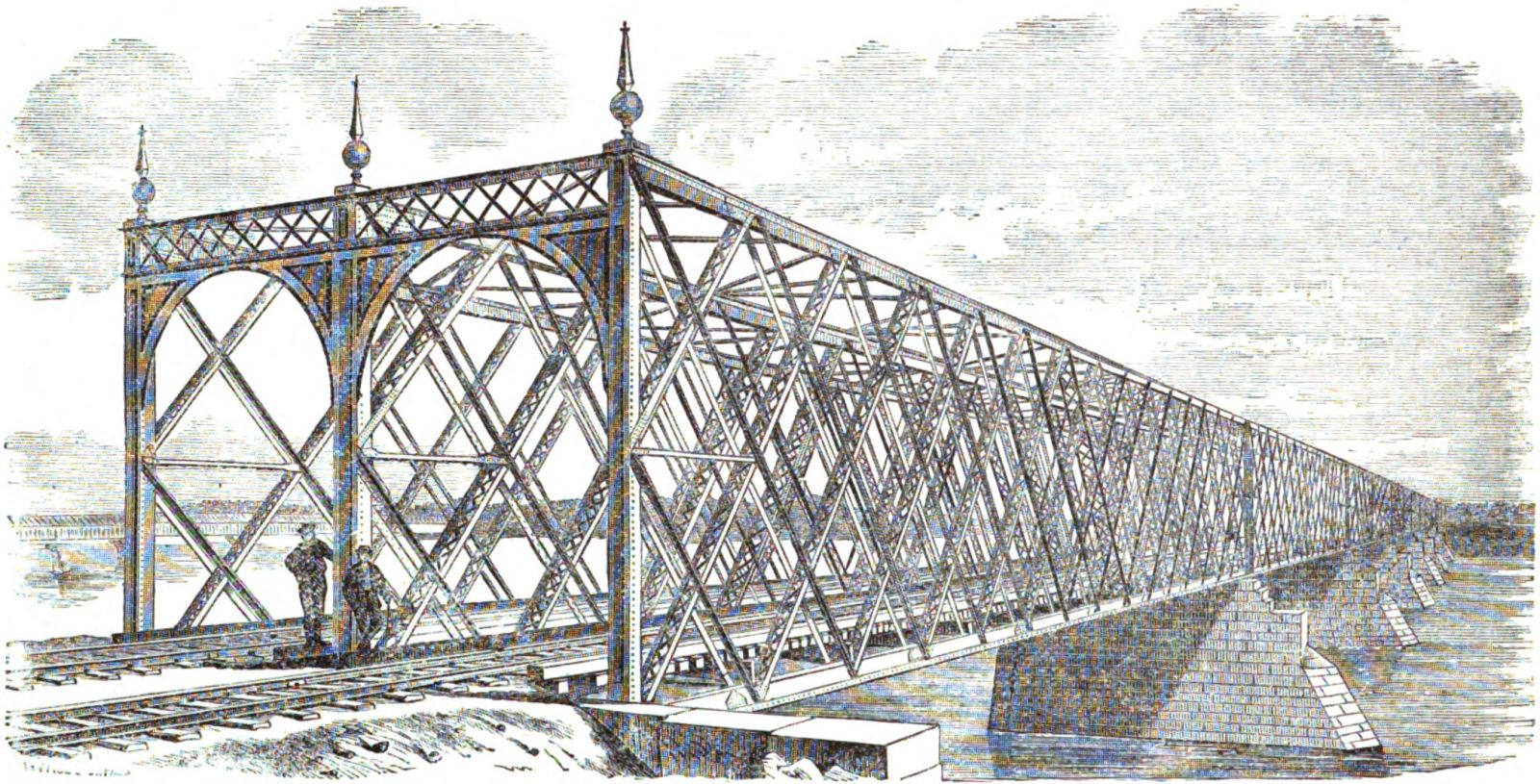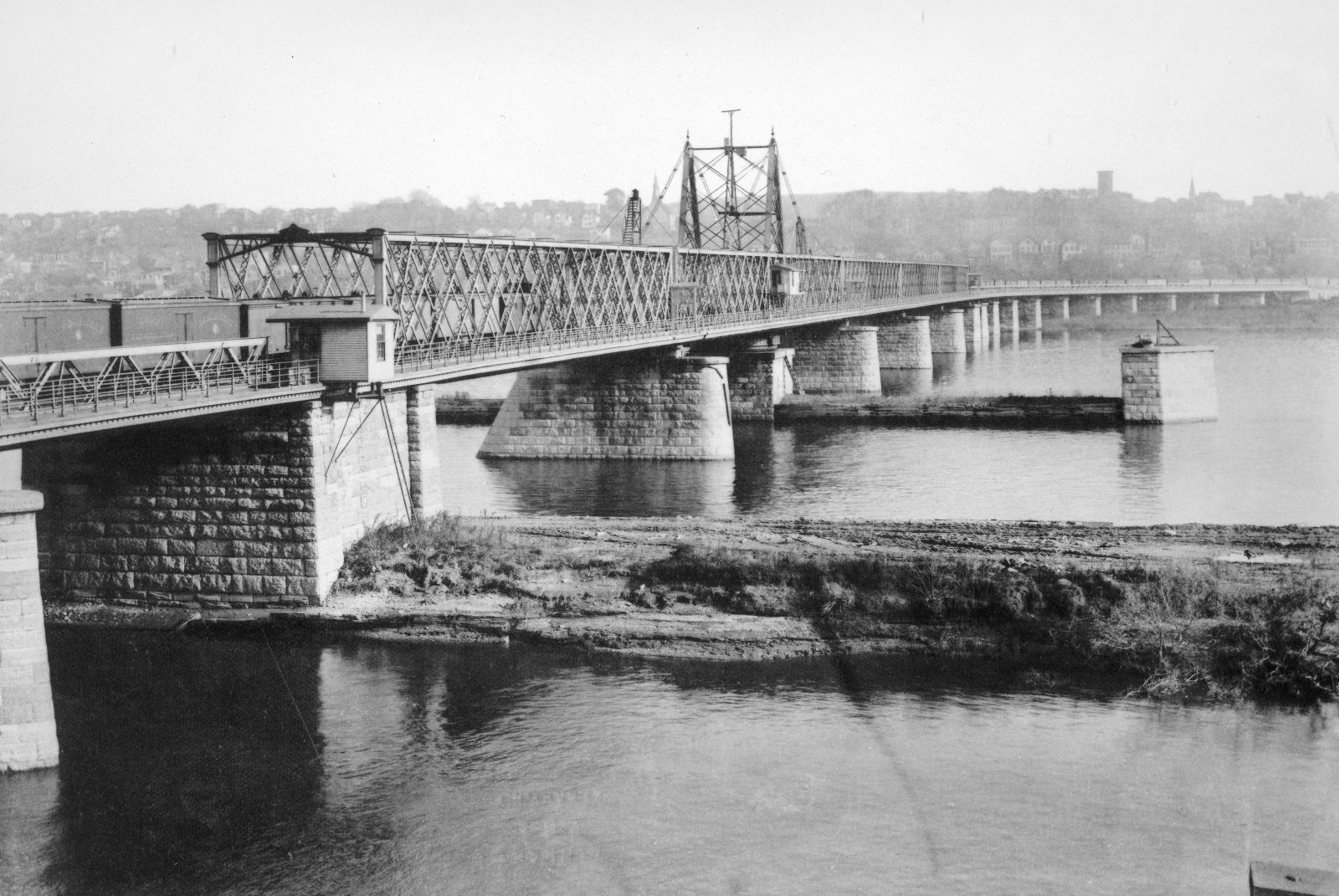Leighton Bridge & Iron Works was founded by prominent civil engineer Thomas Leighton. Leighton was born in 1818 in Augusta, Maine. Little is known about Mr. Leighton's youth, but it is believed he helped build railroad bridges in Panama during the early 1850s.
Leighton and his wife, Kate, moved to Rochester, New York in 1854. Leighton partnered with John Fowler, and had an iron works shop at the corner of Main Street and St. Paul Street in Rochester.
John Fowler died in 1868, and Leighton began his own business in 1870. This new business focused on building iron railroad bridges. By 1874, the shop was turning out dozens of bridges per year, particularly to the New York Central Railroad. Leighton was considered one of the top bridge builders in the United States by the mid-1870s, and had constructed 128 separate structures for New York Central alone in 1874.
At his company, Leighton mentored several other prominent bridge builders, including John Alden and Charles Hilton. Hilton in particular was key in the development of this company. Hilton had previously worked on the NYC, designing a lattice style truss for railroad use. He perfected the design into what is now known as the "Quadrangular Lattice Truss", which keeps members intersecting at right angles, and eliminated the need for vertical members.
This Quadrangular Truss was an offshoot of lattice trusses designed in London during the 1850s. Howard Carroll, bridge engineer for the New York Central, originally studied these bridges in Europe. He brought the design to the New York Central, who installed the first iron railroad lattice truss in 1859. Hilton was an assistant to Carroll at NYC, and perfected his design for his lattice truss in 1864.

When Hilton joined Leighton, this design became extremely common along the NYC and other railroads. Leighton specialized in producing these large riveted trusses, many of which had to be produced in shop, due to the difficulty of field riveting. At the time, large deck truss spans also used a larger lattice design.
In 1881, after 11 successful years, Leighton was forced to retire due to declining health. At the time of his retiring, the shops were employing 300 people in Rochester. Hilton began his own bridge company in Albany, New York; continuing to produce his Quadrangular Lattice Truss. John Alden partnered with Moritz Lassig and leased the Rochester shops, before outright buying the shops in 1884. Lassig had previously owned a shop in Chicago.
When this partnership dissolved in 1886, Lassig returned to Chicago and formed Lassig Bridge & Iron Works, while Alden kept the Rochester shop, renaming it Rochester Bridge & Iron Works. Lassig continued to also build the Hilton Quadrangular design, bringing it to several Midwest railroad companies. Rochester Bridge & Iron also continued to design lattice trusses for railroad use, but there is no record of him building the Hilton design.
Unfortunately, Leighton died in February of 1886 due to poor health. Very little remains of his many works, most of which were built for railroads. However, his mass production of Hilton's lattice truss has made his company an icon in American civil engineering. After his death, this design rapidly expanded and many hundreds were built for railroad use by Lassig, Alden and Hilton; among other companies using the non-patented design.

New York Central Bridge at Albany, New York (Built 1870, Replaced 1901)
All three companies that came from Leighton were merged into the newly American Bridge Company in 1900. American Bridge continued building the Hilton style lattice truss through at least 1918, before phasing the design out.
The shops at Culver Road and Leighton Avenue in Rochester were demolished prior to the 1950s. It is believed that American Bridge closed the shops in 1903.
Leighton received mention in a 2014 article in the Rochester Democrat & Chronicle, noting his many works and how they changed previous generations lives.
Of many spans constructed by Leighton, only four are known to still exist. It is highly likely that there are more on former NYC lines that have not been identified as being a Leighton product.
A few railroads are known to have used Leighton products, including the Chicago & North Western Railway, the New York Central and the Boston & Albany Railroad.
A sample of plaques and projects completed by Leighton Bridge & Iron Works can be seen below. Only one plaque has been found, and unfortunately it was removed.
Missing plaque on the Redstone Bridge; New Ulm, Minnesota
Selected Works
Northwestern Bridge (Eau Claire, Wisconsin)
Redstone Bridge (New Ulm, Minnesota)
Carpentersville Rail Bridge (Carpentersville, Illinois)
RCPE Boxelder Creek Bridge (Blackhawk, South Dakota)
